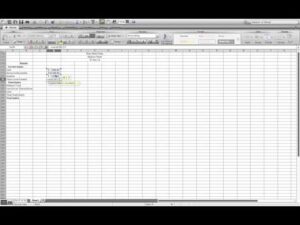
You have created and sent your invoice, and now the payment is in your Undeposited Funds account. As always, you should remember that transactions in QuickBooks should mirror life – so now it’s time to deposit those payments into an account in QuickBooks. If you haven’t already, put invoice payments and sales receipts you want to combine into the Undeposited Funds account. In these cases, QuickBooks has a special way for you to combine transactions so your records match your real-life bank deposit.
Fintechs and Traditional Banks: Navigating the Future of Financial Services
As a small business owner or accountant, managing your finances efficiently is vital. QuickBooks is a powerful tool designed to streamline your accounting processes, including the ability to track and manage deposits. However, there may be instances where you need to delete a deposit due to errors or changes in financial transactions. Learn about deleting overdue payments on QuickBooks, along with the steps involved in removing them from your records. In this write-up, we’ll talk about the process to delete or undo a deposit in QuickBooks Desktop and Online for both funds. Making duplicate deposits, incorrectly adding checks, or adding deposits to the wrong customers are some of the common QuickBooks errors that can be experienced by users.
How do I clear/delete undeposited funds from the bank deposit?
Suppose you remember the transaction type or the date; enter these details, and the system will pull up matching records. Enter the username and how to do a bank reconciliation password that you have registered for your Quickbooks Online account. This is crucial to maintain the integrity of your financial records.
What happens to the transactions when I delete a deposit in QuickBooks?

This doesn’t change the way QuickBooks categorizes payments on your chart of accounts. Here’s how to change the way QuickBooks categorizes customer payments on your chart of accounts. In Quick books online, I am trying to delete a deposit in the “undeposited funds” register. I keep getting the message “This transaction has been deposited. If you want to change or delete it, you must edit the deposit it appears on and remove it first.” The process for deleting a deposit in QuickBooks Desktop and Online should now be clear to you after reading out this write-up. However, it is created with the intention of explaining how to delete or undo a deposit in QuickBooks Desktop and Online.
There are a few ways to enter bank deposits in QuickBooks, and the one you choose depends on how your original transactions were entered. Find the transaction you wish to delete, click on it to open the details, and select ‘Delete.’ Confirm your choice to remove the transaction from your financial records. Remember that voiding a deposit should be done with caution as it will impact the financial records. Always double-check the transaction before finalizing the voiding process.
Deleting bank deposits
Follow the outlined steps to effectively void a deposit within the QuickBooks software. Quickbooks gives businesses an easy way to manage bookkeeping with tools to record payments, deposits, costs. In some cases, deposits are incorrectly entered or recorded in your account register and need to be reversed without removing it from your company’s payment record or undeposited funds. Quickbooks handles this through the “Make Deposits” window, and provides a simple method of deleting incorrect or unneeded deposit records from your account register. Quickbooks allows you to modify your records for total control over your bookkeeping. Deposits play a crucial role in accurately tracking your business’s cash flow and ensuring that your financial records match the actual funds you have received.
And if I try to change the customer name in the Sales Receipt window I get an error message because the Sales Receipt is linked to the deposit. In addition, you can customize the Deposit Detail report in QuickBooks. This way, it would be for you to review the details net purchases of this report. Once done, this will automatically update the name of the customer to all transactions that were linked to it. Before that, the “uncheck the customer name” in step no. 8 means that removing the customer name in the RECEIVED FROM column.
In order to make a deposit that is modified, you’ll need to temporarily detach the information you wish to modify from the deposit and then add it back once it is corrected. When you return to the “Bank deposit” page, you will notice that the payment is excluded. You will still see these changes in your audit trail (history of changes) status before and after deletion. Our live support agents will be your number one resource to resolve this. They have available tools to do a screen-share with you and further check at your account to help you right away.
The complete step-by-step process for removing a deposit in QuickBooks Desktop and QuickBooks Online are discussed in the below section. See articles customized for your product and join our large community of QuickBooks users. On the other hand, the Undeposited Funds account is always available on the Chart of Accounts.
- No, once a deposit is deleted in QuickBooks, it cannot be recovered.
- In some cases, deposits are incorrectly entered or recorded in your account register and need to be reversed without removing it from your company’s payment record or undeposited funds.
- Sometimes you need to start fresh with a new QuickBooks Online company.
- When removing the deposit, the payment is removed as well if you are using the Undeposited Funds account.
- Search and locate ‘SaasAnt Transactions’ to connect and integrate with QuickBooks.
Verifying the reversal action also provides a necessary audit trail for future reference, giving users the confidence that the deposit transaction has been appropriately addressed. With this information at your fingertips, you can proceed to undo, reverse, or edit specific deposit transactions as needed, ensuring accuracy and proper documentation within QuickBooks. After completing the delete process, make sure to review your remaining deposits to ensure that your financial records accurately reflect the changes made. QuickBooks Desktop provides a user-friendly interface with clear navigation steps, making the process of editing or deleting deposits straightforward for users.
Select the bank account where an improper deposit was made from the Select Account drop-down menu. Checks that are received are deposited into the account for the undeposited fund after being applied against sales receipts or invoices. These checks are consolidated into a single deposit transaction when they are placed in the bank using the undeposited fund’s account. If you eliminate that deposit, all of the checks ought to resurface in the undeposited funds account. Voiding a deposit in QuickBooks is a critical process to nullify a previously recorded deposit transaction, ensuring accurate financial records and transaction management.

After clicking ‘Void Deposit’, a confirmation prompt will appear asking you to confirm the voiding of the deposit. Carefully review the details of the transaction to ensure it is the correct deposit to void. Once confirmed, the deposit will be voided, and the status will be updated accordingly in the system. After initiating the deletion process, QuickBooks Desktop will prompt a confirmation dialogue to ensure the intentional deletion of the selected deposit. Errors in the recorded amount may occur due to human input mistakes, or a deposit may need to be deleted to reverse an unintended transaction.
This method can be useful if you want to keep a trace of the deposit for auditing purposes or if you need to reverse a deposit due to changes in circumstances. Whether you are a seasoned QuickBooks user or just getting started, our guide will help you navigate through the process smoothly. Let’s dive in and learn how to effectively delete a deposit in QuickBooks. QuickBooks will start depositing customer payments from online invoices and other sources into the new account. When a payment is received, it is debited from the account holding the deposited funds.
Your undeposited fund account will be credited with the amount of the deposit when you make a deposit. Voiding a deposit keeps the record how to reduce your tax bill with itemized deductions but nullifies its value, which helps keep an audit trail. Choose to void if you need to maintain a transaction record for reference.
Leave a Reply